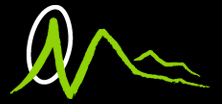-
You are in:
- Stone types >
- Rojo Moncayo
Rojo Moncayo
It is a highly compacted, reddish-shaded sandstone sometimes with some grey zones. Its value derived from several technological studies have shown a high suitability for pavements and coatings.
Absorption. UNE-EN 13755:2002
2,0%
Open porosity. UNE-EN 13755: 2002
8,1%
Determination of the bulk density. UNE-EN 1936:2007
2420 Kg/m3
Resistant to bending. UNE-EN 12372:2007
10,5 MPa
Resistant to bending after freezing. UNE-EN 12372- 12371
10,6 MPa
Resistant to compression. UNE-EN 1926:2007
131 MPa
Resistant to compression after freezing. UNE-EN 1926-12371
145 MPa
Resistant to slippage without polishing. UNE-EN 14231: 2004
90
Resistant to erosion provoked by abrasion. UNE-EN 14157: 2005
20mm
Determination of the resistance during salts' cristallization UNE-EN 12370:1999
0,02%
Petrography study UNE-EN 12407:2001
Grauvaca Feldespática
|
||||
|
Geographically, the Rojo Moncayo quarry is situated in Jarque del Moncayo's municipality, in Moncayo's Sierra. Geologically, the exploited materials is located in the Iberian Mountain range's central sector. They are fitted in Buntsandstein facies and are in the Triásico inferior's age.
The " Buntsandstein" facies’ formation is constituted by red sandstones of fluvial origin that have a power superior to the hundred meters and that was deposited in arid climate conditions. The main characteristic of this unit is its reddish colour which represents a secondary or diagenetic origin. This colour is due to the transformation in hematite of oxides and iron hydroxides contained in the original sediment during the diagenetic processes that allow sediment to be transformed into rock.
The exploited sandstones in Jarque of Moncayo are of medium grain and appear in banks of variable power, that can be massive or can present crossed stratification and/or parallel lamination, separated by argillaceous sections.
|









 Natural stone types
Natural stone types Rojo Moncayo
Rojo Moncayo






